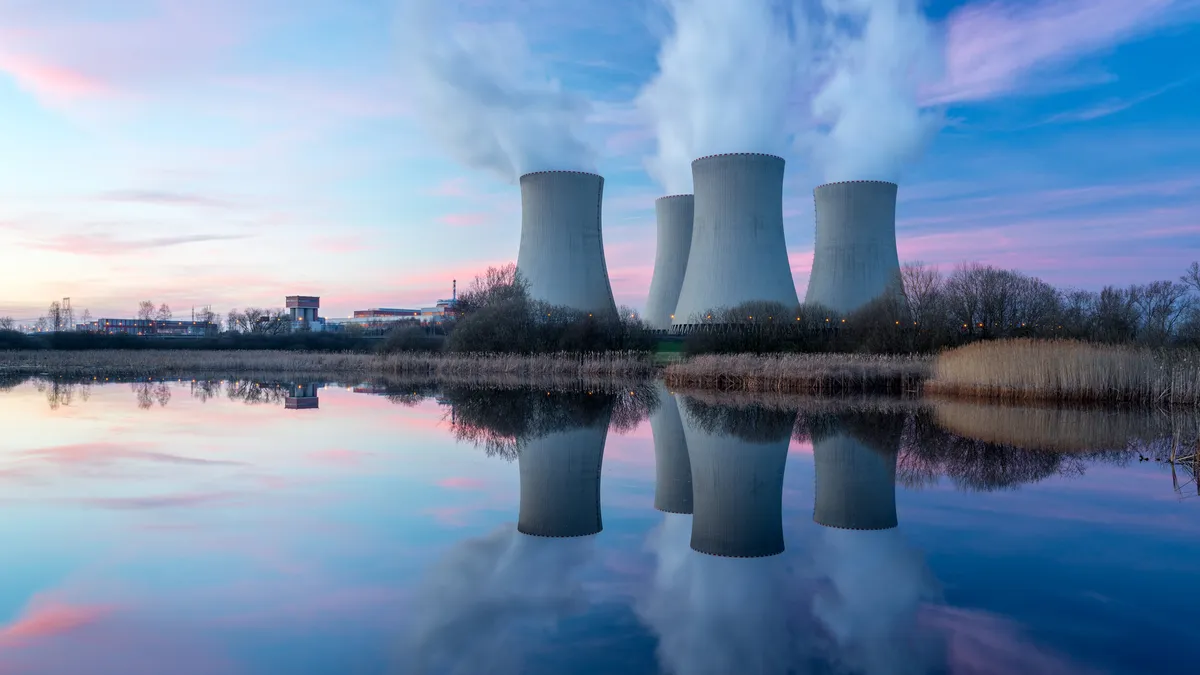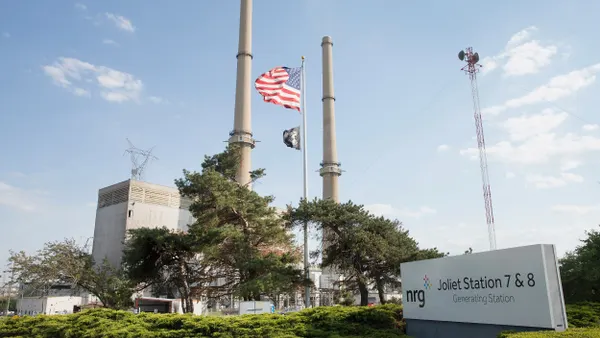Dive Brief:
- Two studies differ over how much nuclear waste would be a factor with small modular reactors, or SMRs, such as those planned by NuScale and TerraPower.
- The Argonne and Idaho national laboratories say managing waste from SMRs would have few challenges compared with traditional light water reactors. Spent fuel is thermally hot and highly radioactive, requiring remote handling and shielding.
- A study led by Stanford University and the University of British Columbia says SMRs will generate more radioactive waste than conventional nuclear power plants.
Dive Insight:
SMRs will offer zero-emission scalable nuclear technology to produce electricity, heat and clean water, helping meet greenhouse gas targets, while still requiring the industry and policymakers to devise waste disposal solutions.
Managing nuclear waste from SMRs, still in development, would have few challenges compared with traditional light water reactors, according to a Nov. 18 report by the Argonne and Idaho labs that studied three designs scheduled to be built and operated by the end of the decade.
Each of the three designs offers advantages and disadvantages over large light water reactors, said Taek Kyum Kim, a senior nuclear engineer at the U.S Department of Energy’s Argonne lab in Lemont, Illinois. Each reactor, he said, has “pluses and minuses” depending on factors such as uranium enrichment, thermal efficiency and discharge burnup, the amount of thermal energy produced from fuel.
“All told, when it comes to nuclear waste, SMRs are roughly comparable with conventional pressurized water reactors, with potential benefits and weaknesses depending on which aspects you are trying to design for,” Kim said. “Overall, there appear to be no additional major challenges to the management of SMR nuclear wastes compared to the commercial-scale large LWR wastes.”
A May 31 study published in the Proceedings of the National Academy of Sciences came to a different conclusion. A comparison of SMRs shows that designs cooled by water, molten salt and sodium will increase the volume of nuclear waste requiring management and disposal by factors of two to 30, the study said.
“These findings stand in sharp contrast to the cost and waste reduction benefits that advocates have claimed for advanced nuclear technologies,” Lindsay Krall, the study’s lead author, said in a posting by Stanford News.
“Simple metrics, such as estimates of the mass of spent fuel, offer little insight into the resources that will be required to store, package and dispose of the spent fuel and other radioactive waste,” she said.
Jose Reyes, chief technology officer and co-founder of NuScale, which is designing an SMR cited among the subjects of the Academy of Sciences study, said average fuel burnup and other measures are “within the values typically observed in the existing fleet of LWRs.”
“Therefore, the NuScale 250-MWt design does not produce more spent nuclear fuel than the small quantities typically observed in the existing LWR fleet,” he said in a rebuttal in June in Nuclear NewsWire.
Nuclear energy is key to decarbonizing energy. SMRs, with greater flexibility and lower costs, are seen as alternatives to large nuclear reactors. SMRs generally have a capacity of less than 300 MW, a fraction of typical power reactors with 1,000 MW to 1,600 MW.
Krall said in an email that one reason for the difference in conclusions between the two studies is that the national lab study analyzed the 345-MWe TerraPower reactor, which “does not even meet the definition of a ‘small’ reactor” of less than 300 MWe.
“One of our major findings was that smaller reactors will generate more waste, so it is not surprising that the analysis of relatively larger reactors results in less waste,” she said.
The national labs study said it included the TerraPower reactor because it is the “most mature design in its technology class and is closer in size to SMRs than to current reactors.”
A spokeswoman said in an email that TerraPower anticipates the Natrium reactor will operate three times more efficiently than traditional water-cooled reactors, which will lead to significantly less waste.
Commercial nuclear power plants in the U.S. have produced more than 88,000 metric tons of spent nuclear fuel and intermediate and low-level radioactive waste, according to a Stanford study. The most highly radioactive waste, primarily spent fuel, must be isolated in deep-mined geologic repositories for hundreds of thousands of years, the study said.
Most spent nuclear fuel is stored in specially designed pools at reactor sites around the country, using dry cask storage systems, according to the U.S. Nuclear Regulatory Commission.
The fleet of commercial nuclear reactors in the U.S. includes 92 large LWRs with an average generating capacity of more than 1,000 MWe, according to the national labs study. They generate nearly one-fifth of the U.S. electricity supply, according to Stanford.
“These large LWRs built on-site in massive construction projects have been the mainstay of the industry for the last 50 years,” it said. “However, new construction soon is expected to include several designs of smaller reactors primarily fabricated in factories and installed in the field in modules.”
Studies have focused on the technologies and economics of SMRs, but “only minimal information” has been published on nuclear waste that could be generated by SMRs “and no reports focused on near-term-deployable designs.”















